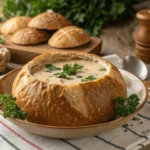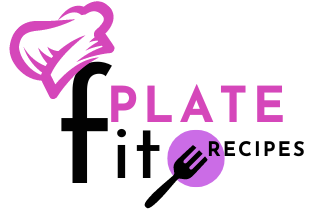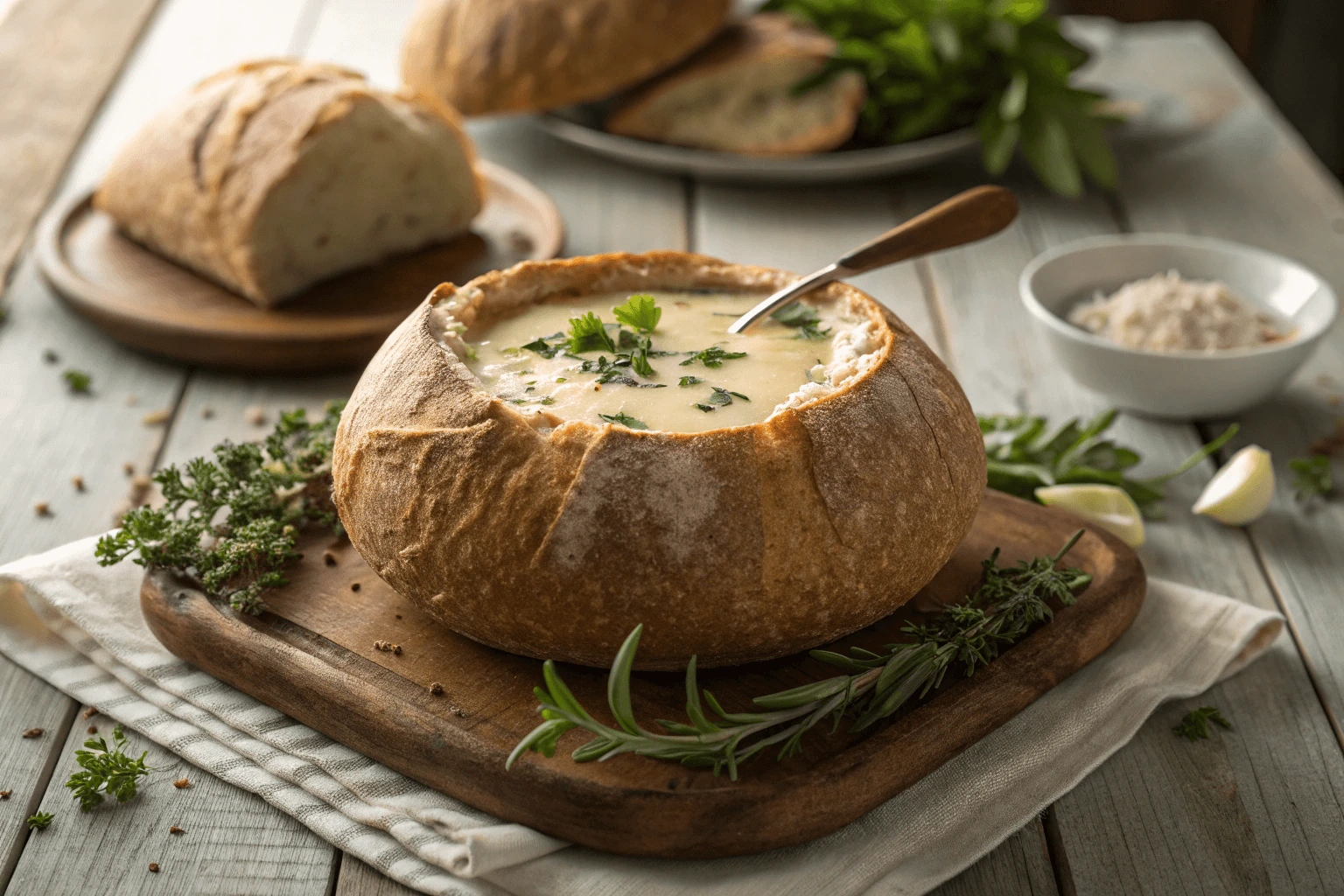Introduction
Bread bowls are a brilliant combination of creativity and practicality, transforming an ordinary loaf of bread into an edible vessel for soups, stews, and even desserts. Among all the bread types used for this purpose, sourdough bread bowls are in a league of their own. This article will walk you through what makes them so special, how to bake your own at home, and the various ways to enjoy them. From understanding the health benefits of sourdough to pairing it with the perfect dishes, we’ll cover everything you need to know about these delightful creations.
Contents
What Makes Sourdough Bread Bowls Unique?
Sourdough bread bowls are more than just an aesthetic addition to your meal. They combine tradition, flavor, and function in a way that appeals to food lovers everywhere. Let’s dive into their uniqueness.
Why Sourdough Bread Bowls Stand Out from Other Bread Types
What sets sourdough bread bowls apart is their unmistakable tangy flavor, which comes from the natural fermentation process. Unlike regular bread that relies on commercial yeast, sourdough uses a starter made from wild yeast and bacteria. This creates a bread that is not only flavorful but also easier to digest, as the fermentation breaks down gluten and phytic acid.
Moreover, sourdough bread has a denser crumb and a sturdier crust, making it ideal for holding soups or stews without becoming soggy. The combination of strength and flavor means sourdough bread bowls don’t just hold your meal—they elevate it. (Oops, scratch that word—let’s just say they make the meal even better!)
The History Behind Bread Bowls and Sourdough Bread
Bread bowls date back centuries, with records suggesting they originated as a practical way to serve stew in medieval Europe. Sourdough, however, has an even longer history, going back 6,000 years to ancient Egypt. This age-old bread-making technique is celebrated for its simplicity, using just flour, water, and salt to create something extraordinary. The use of sourdough for bread bowls combines the best of both worlds—functionality and tradition.
In today’s kitchens, sourdough bread bowls are a way to bring a rustic, homemade touch to your meals while embracing an age-old culinary technique. Whether you’re serving a creamy chowder, a hearty chili, or even a dessert like chocolate fondue, sourdough bread bowls provide the perfect edible dish.
How to Create the Ideal Sourdough Bread Bowl at Home
Making sourdough bread bowls at home may sound intimidating, but with the right steps, anyone can achieve this rustic masterpiece. From choosing the best ingredients to shaping the perfect bowl, this guide will walk you through the process.

Choosing the Right Flour and Ingredients for Sourdough
The foundation of great sourdough bread bowls lies in selecting high-quality ingredients. For the flour, bread flour is often preferred because of its high protein content, which helps create the sturdy structure needed to hold your fillings. Whole wheat flour or rye flour can be used as part of the mix for added flavor, but be sure not to overdo it, as these flours can make the bread too dense.
A good sourdough starter is key. If you don’t already have one, you can make it using just flour and water. Feed it daily until it becomes bubbly and active. Don’t forget the salt—it enhances the flavor and strengthens the dough. Remember, sourdough doesn’t rely on commercial yeast, so patience during the fermentation process is essential.
Step-by-Step Guide to Crafting the Perfect Bread Bowl
- Mix the Dough: Combine your sourdough starter, flour, water, and salt in a large bowl. Knead it until the dough feels elastic and smooth.
- Let it Rest: Cover the dough and let it rest for 30 minutes. This allows the gluten to relax and makes shaping easier.
- Bulk Fermentation: Leave the dough to ferment in a warm spot for 4-6 hours, or until it doubles in size.
- Shape the Bowls: Divide the dough into individual portions and shape them into tight, round balls. Place them on a baking sheet lined with parchment paper.
- Proof the Dough: Allow the shaped dough to rise again for 1-2 hours. This step gives the bread its light texture and prevents cracking.
- Bake: Preheat your oven to 450°F. Bake the bread bowls for 20-25 minutes, or until the crust turns golden brown. Let them cool before hollowing out the centers.

The Science Behind the Sourdough Fermentation Process
Sourdough bread isn’t just delicious; it’s a fascinating example of how nature works its magic. The fermentation process gives sourdough bread bowls their signature tang and health benefits, making them a preferred choice for many.
How Fermentation Impacts Texture and Flavor
Fermentation is what makes sourdough unique. During this process, wild yeast and lactic acid bacteria in the starter feed on the sugars in the flour. This produces carbon dioxide, which helps the dough rise, and organic acids, which give the bread its tangy flavor.
The longer fermentation time also allows enzymes to break down starches in the flour, creating a softer, more digestible crumb. This is why sourdough bread bowls have a unique balance of chewiness and sturdiness—perfect for holding hearty soups without falling apart.
Why Sourdough Is Easier on Digestion Compared to Other Breads
Many people wonder, why is sourdough so much better for you? The answer lies in the fermentation process. The natural bacteria in sourdough break down gluten and phytic acid, which are often harder for the body to digest. As a result, sourdough is gentler on the stomach and can be enjoyed by those with mild gluten sensitivities.
Additionally, sourdough contains higher levels of nutrients like B vitamins, iron, and magnesium. It’s a great way to enjoy bread without feeling heavy or bloated afterward. That’s another reason sourdough bread bowls are a fantastic choice—they don’t just taste amazing, but they’re also better for your overall well-being.

Popular Uses for Sourdough Bread Bowls
Sourdough bread bowls are as versatile as they are delicious. While they’re often associated with soups, their uses go far beyond that. Let’s look at some of the most popular and creative ways to enjoy these edible bowls.
Perfect Pairings: Soups, Stews, and More
The classic use of sourdough bread bowls is as a vessel for soups, stews, and chowders. Their sturdy crust holds liquids without turning into a soggy mess, which makes them perfect for creamy tomato soup, hearty beef stew, or clam chowder. But why stop there? Broccoli cheddar soup and chili are equally satisfying options.
So, what to eat with sourdough bread bowls? You can serve them with a simple side salad or roasted vegetables for a complete meal. And don’t forget: after finishing the soup, tearing into the flavorful bread bowl itself is part of the experience!
Non-Traditional Uses for Bread Bowls: Desserts and Dips
Bread bowls aren’t just for savory dishes. They can also be transformed into desserts by filling them with chocolate fondue or bread pudding. For parties, fill smaller bread bowls with dips like spinach artichoke or hummus. These creative uses make sourdough bread bowls a fun and delicious choice for any occasion.
For more ideas on versatile recipes, check out the categories on Fit Plate Recipes.
Top Tips for Baking and Shaping Your Bread Bowl
Crafting the perfect sourdough bread bowls is as much about technique as it is about the ingredients. Follow these tips to get a bowl that’s not only delicious but also structurally sound.
Achieving the Right Shape and Texture
The key to a good bread bowl is balance—it should be thick enough to hold liquid but soft enough to tear and enjoy. When shaping the dough, create a tight surface tension by tucking the edges under as you form a ball. This step helps the bowl hold its shape during baking.
During proofing, be careful not to overdo it. An over-proofed dough can collapse in the oven, while an under-proofed one won’t rise enough. Aim for a middle ground by checking for a slight bounce-back when you gently press the dough with your finger.
Baking Techniques for a Crispy Crust and Soft Center
To get that perfect crust, bake your bread bowls in a hot oven with steam. You can add steam by placing a small pan of water in the oven or misting the inside with a spray bottle. The moisture creates a golden crust, while the high temperature ensures the inside stays soft and chewy.
After baking, allow the bread bowls to cool completely before cutting out the center. This prevents the crumb from tearing and keeps the walls sturdy enough to hold your fillings.
If you’re looking for additional tips for home baking, check out other Fit Plate Recipes for inspiration.
Sourdough Bread Bowls vs. Other Bread Bowls
While all bread bowls serve the same purpose, not all are created equal. When comparing sourdough bread bowls with other types like rye or whole wheat, sourdough often stands out for its taste, texture, and health benefits.
What Sets Sourdough Apart?
Sourdough bread bowls have a unique tangy flavor that other bread types simply can’t match. This distinct taste comes from the natural fermentation process. In contrast, bread bowls made from white or whole wheat bread often lack the complexity of flavor found in sourdough.
Another major advantage of sourdough is its sturdy crust. This crust doesn’t just hold liquid—it adds an irresistible crunch that enhances the eating experience. If you’re wondering, what is the best bowl for making sourdough bread? The answer is a well-proofed, naturally fermented dough that strikes the perfect balance between thickness and chewiness.
Comparing Sourdough with Rye, Whole Wheat, and White Bread Bowls
Rye and whole wheat bread bowls can be heavier and denser, which may not appeal to everyone. White bread bowls, on the other hand, are soft but often lack the structural integrity to hold soups or stews for long.
This is where sourdough shines—it’s strong enough to hold hearty chowders and stews without falling apart, yet soft enough inside to tear and enjoy with your meal. Plus, sourdough’s health benefits, such as easier digestion and higher nutrient content, make it a smarter choice. For those still wondering, are Panera bread bowls sourdough? While they have a sour flavor, they aren’t traditionally fermented sourdough.
Maintaining Freshness and Storing Bread Bowls
Proper storage is key to getting the most out of your sourdough bread bowls. If stored the right way, they can remain fresh for several days and even be frozen for future use.
Best Practices for Keeping Bread Bowls Fresh Longer
After baking, let your bread bowls cool completely before storing them. This prevents condensation from forming, which can make the crust soggy. Once cooled, place them in an airtight container or wrap them in plastic wrap. For short-term storage, keep them at room temperature for up to two days.
To revive the crust, you can lightly toast them in the oven before serving. This trick works wonders if the bread starts to lose its crunch.
How to Freeze and Reheat Sourdough Bread Bowls
If you’ve made extra bread bowls, freezing them is a great option. Wrap each one tightly in plastic wrap, followed by aluminum foil, to protect against freezer burn. They can be frozen for up to three months.
When you’re ready to use them, let the bread thaw at room temperature. To bring back the fresh-baked taste, pop them into a preheated oven for 10 minutes.
Frequently Asked Questions About Sourdough Bread Bowls
When it comes to sourdough bread bowls, many common questions arise. Here, we’ll address some of the most frequently asked questions to help you enjoy them to the fullest.
What Is the Best Bowl for Making Sourdough Bread?
The best bowl for making sourdough bread is a Dutch oven or a bread-proofing bowl. A Dutch oven helps create a steamy environment, which is essential for achieving a golden, crispy crust. Alternatively, a proofing basket (banneton) can shape the dough before baking, giving your sourdough bread bowls the right structure.
Are Panera Bread Bowls Sourdough?
This is a common question. While Panera bread bowls have a sour flavor, they are not made with the traditional fermentation process of sourdough. True sourdough relies on a starter made with wild yeast and bacteria, giving it distinct flavor and health benefits that Panera bread bowls may lack.
Why Is Sourdough So Much Better for You?
Sourdough is often easier to digest than other breads due to its natural fermentation. The fermentation process breaks down gluten and phytic acid, making it gentler on the stomach and more nutrient-rich. This makes sourdough bread bowls not only tasty but also a healthier option compared to bread bowls made with commercial yeast.
What Is the Point of a Bread Bowl?
Bread bowls serve as an edible dish, combining food and presentation into one package. The crust acts as a sturdy container, while the inside is soft and absorbent, making it perfect for holding warm soups or creamy dips. Plus, eating the bread bowl at the end is like having a built-in dessert!
What to Eat with Sourdough Bread Bowls?
There’s no limit to what you can pair with sourdough bread bowls. Classic options include soups like clam chowder, tomato bisque, or broccoli cheddar. For a lighter meal, pair them with a fresh salad or roasted vegetables. You can also serve them with dips, spreads, or even desserts like chocolate fondue.
What Is the Proper Etiquette for Bread Bowls?
Wondering how to eat a bread bowl without making a mess? Start by enjoying the soup or dip inside with a spoon. Once the filling is mostly gone, tear pieces from the top or sides of the bowl to soak up the remaining liquid. Eating the bowl piece by piece is not only practical but also part of the fun!
Delicious Recipes Featuring Sourdough Bread Bowls
One of the best things about sourdough bread bowls is their versatility. Here are some recipe ideas to inspire your next meal.
Classic Soup Recipes Perfect for Bread Bowls
- Creamy Clam Chowder: The rich, briny flavors of clam chowder pair beautifully with the tangy crust of sourdough.
- Broccoli Cheddar Soup: This cheesy, comforting soup is a classic choice for bread bowls.
- Tomato Bisque: A creamy tomato bisque with a hint of basil is perfect for dipping and sipping.
Creative Twists: Stuffed, Grilled, and Dessert Bread Bowls
Bread bowls don’t have to be reserved for soup. Try these creative twists:
- Stuffed Bread Bowls: Fill your sourdough bread bowls with cheesy spinach dip or a hearty breakfast scramble.
- Grilled Bread Bowls: Brush the inside with olive oil, add your favorite fillings, and bake for a crispy, golden finish.
- Dessert Bread Bowls: Fill them with chocolate fondue, fresh fruit, or even ice cream for a unique dessert option.

How to Make Sourdough Bread Bowls That Everyone Will Love
- Total Time: 7 hours 25 minutes
Description
Sourdough bread bowls are the perfect combination of flavor and functionality. With a tangy crust and a soft interior, these bowls are perfect for holding soups, stews, and dips. This recipe walks you through the process step-by-step, ensuring homemade bread bowls that are delicious, sturdy, and easy to make.
Ingredients
-
For the Dough:
- 4 cups bread flour
- 1 cup sourdough starter (active and bubbly)
- 1 ½ cups water (room temperature)
- 2 tsp salt
-
For Baking:
- 1 cup all-purpose flour (for dusting)
- Water for steaming
Instructions
- Prepare the Dough: In a large mixing bowl, combine the sourdough starter, bread flour, water, and salt. Mix until a rough dough forms. Knead for 8-10 minutes until the dough is smooth and elastic.
- First Rise: Cover the bowl with a damp cloth and let the dough rise in a warm spot for 4-6 hours, or until it doubles in size.
- Shape the Bowls: Divide the dough into 4-6 equal portions. Shape each portion into a tight ball and place them on a baking sheet lined with parchment paper.
- Proof the Dough: Let the shaped dough proof for 1-2 hours until it becomes slightly puffy.
- Bake: Preheat the oven to 450°F (232°C). Place a pan of water on the bottom rack to create steam. Bake the dough balls for 20-25 minutes until golden brown.
- Hollow the Bowls: Allow the bread to cool completely. Use a sharp knife to cut off the top of each loaf and hollow out the inside, leaving about ½ inch of crust all around.
Notes
- If you’re new to sourdough baking, start with an active and healthy sourdough starter for the best results.
- The removed bread from the inside can be toasted and used as croutons for your soup.
- Always let the bread cool before hollowing to prevent tearing the crust.
- For extra crispy bowls, brush the outside with olive oil before baking.
- Prep Time: 7 hours
- Cook Time: 25 minutes

